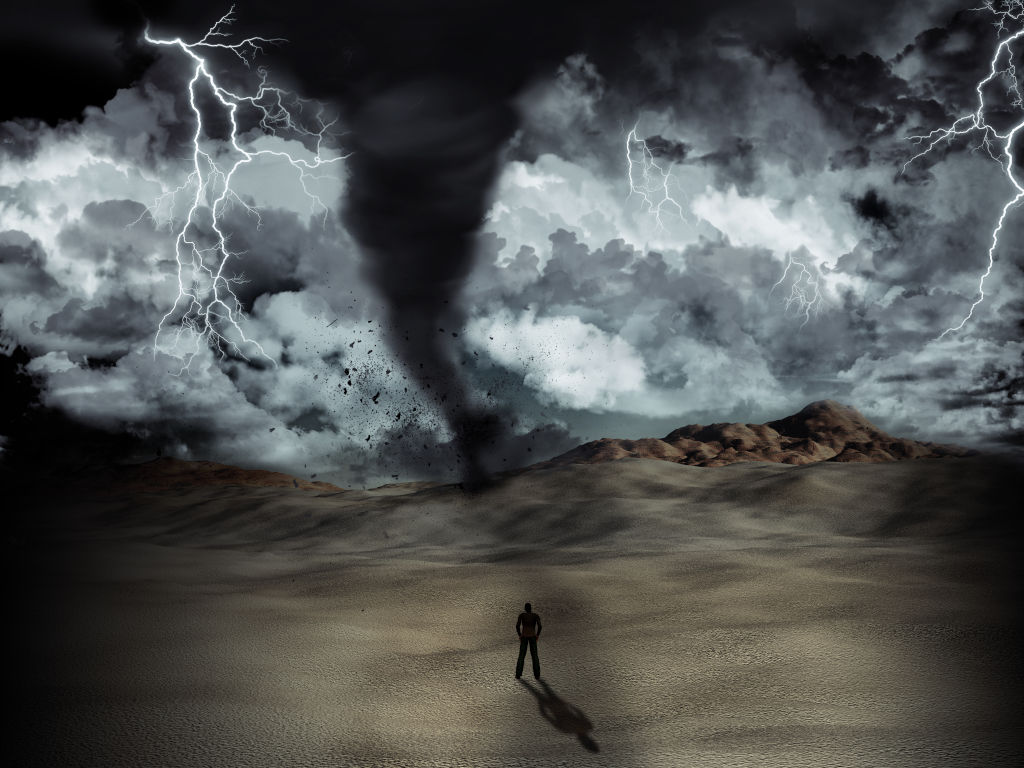Wind-related disasters cause a great deal of physical devastation, injuries, fatalities, and financial loss. The estimated average yearly cost of wind damage is about $6 billion, accounting for more than 50% of all weather-related losses and more than 40% of losses from all natural disasters. With a wind damage animation, the losses caused can be visualized. This will help people understand the severity of the damage.
There are two types of wind damage: damage from straight-line winds and damage from tornadoes. Even though the regular wind may not often reach high enough speeds to inflict harm, it can sometimes produce brief gusts strong enough to topple trees or blow down fences.
What are tornadoes?
A tornado is an air column that stretches from a thunderstorm to the ground. Tornadoes are a combination of violently rotating clouds and thunderstorms. They are incredibly destructive because they can flatten anything in their path. Strong tornadoes have destroyed homes, caused injuries and fatalities, lifted cars, and shattered them into pieces.
A tornado outbreak is one of the most catastrophic meteorological events. Over the past 50 years, there have been more than $20 trillion in total losses. Tornadoes between 1970 and 1980 have resulted in about 100,000 requests for federal disaster aid.
In fact, every year, there are, on average, 1000 tornadoes reported in the United States, which result in 1,500 injuries and 80 fatalities.
What are straight-line winds?
Most people often associate tornadoes or hurricanes with destructive weather phenomena, depending on where in the nation they are. Straight-line winds are another type of weather that can be highly destructive here in the United States.
A straight-line wind is any powerful wind produced by a thunderstorm that does not spin. It moves in a uniform direction. These strong winds can reach up to 100 mph. They shoot downward and then spread outward once they touch the earth.
Straight-line wind occurrences can occasionally be so damaging that tornadoes are mistaken for them. They can inflict significant property damage by uprooting trees and forcing them into buildings and automobiles, breaking through electrical lines, and harming homes.
For instance, on July 4, 1999, a derecho in northern Minnesota, United States, caused tens of millions of trees to be uprooted by winds that reached a peak of at least 160 kilometers (100 mph) per hour.

Proving Liability Using Wind Damage Animation
After a hurricane, repairing property damage may be tiresome and expensive. Before you can even start to remedy the damage, one of the most challenging decisions is how you can pay for it.
Knowing who can be liable for the injury can help you get the money you need to pay the bill.
In the US, damage from a fallen tree is one of the most frequent types of property damage after a high wind.
Who is financially responsible for the damage if a tree or tree branch falls onto your home during a storm?
Most people think that the owner of the tree is to blame. This is undoubtedly true at times. The situation isn’t always like that, though.
Showcasing An “Act of God” With Wind Damage Animation
No party will often be held liable for storm-related damage, mainly when major storms result in extensive damage. In these circumstances, it would be deemed an “act of God” for the tree to fall.
An act of God refers to any uncontrollable, unpredictable, and unpreventable incident. Such occurrences typically include hurricanes, volcanoes, earthquakes, floods, and storms. Amid meteorological events such as hurricane Irma, acts of God protect people and companies.
In most circumstances, your neighbor is not liable if their tree, or any part of it, falls onto your property and causes damage without their fault. Of course, before you decide or judge who you believe to be at fault, you should first speak with a legal professional.
In the case of Fischer v. S/Y NERAIDA, the court held the defendant not liable for negligence. The court found that the defendant exercised reasonable care in preparing for the storm, and the damages caused to the dock were a result of an Act of God and not the fault of anyone.
In cases such as this, wind damage animation can be used to portray the damage and show how there was preparation in anticipation of the storm. Hence, clearly showing it’s an act of God.
Illustrating Gross Negligence With Wind Damage Animation
When wind causes harm, it isn’t necessarily the wind’s fault. In some situations, the property owner can be held liable for negligence.
Even in strong winds, some injuries could have been avoided entirely if someone had taken the time to fulfill their legal obligations. In some situations, there may have been a premises liability incident, and the property owner is to blame.
Let’s take the City of Hattiesburg v. Hillman, for instance, to put this point into perspective.
In this case, an oak tree that had been dead for nearly two years fell during a strong wind. It struck the plaintiff’s child and caused a skull fracture, resulting in the child’s death. The plaintiff then brought a negligence case against the defendant.
The defendant claimed the damage was an Act of God, so he was not responsible. The jury, however, found that the defendant had actual knowledge of the oak tree’s dangerous condition and did not take reasonable steps to alleviate the risk of injury. The court awarded damages of $10,000.00 to the defendant.
Unfortunate deaths or property damage such as this cannot be attributed to an Act of God. So the negligent party would be deemed liable for any injury or damage that resulted from this.
In the event of negligence, wind damage animation can be used to help the jury understand precisely how the inaction of the property owner could have caused or contributed to the damage done to you.

Can I Sue my Insurance Company?
Yes, you can. Policyholders have a right to sue their insurance company if they believe it has acted in bad faith.
When property owners submit a legitimate insurance claim to their insurance company, the insurance company may deliberately fail to fulfill its obligations. They may try to underpay or reject valid claims.
In such circumstances where insurers prioritize safeguarding their profits over providing for their clients, legal animation can help protect property owners against unfair insurance practices by graphically portraying the damages caused to the complainant. Hence, ensuring you receive all the benefits to which you are entitled.
Conclusion
Wind damage animation is a form of demonstrative evidence that can successfully illustrate hidden processes, validate an expert witness’ testimony and recreate incidents without bias.
However, working with a reputable and knowledgeable legal animation company like Fox-AE on your wind damage cases is essential. Our team of expert forensic animators can help illustrate the findings/opinions of an expert meteorologist. The wind direction, density of the gas involved, wind energy, velocity, and gusts can all be illustrated to show the jury how they contributed to the severity of the damage.




